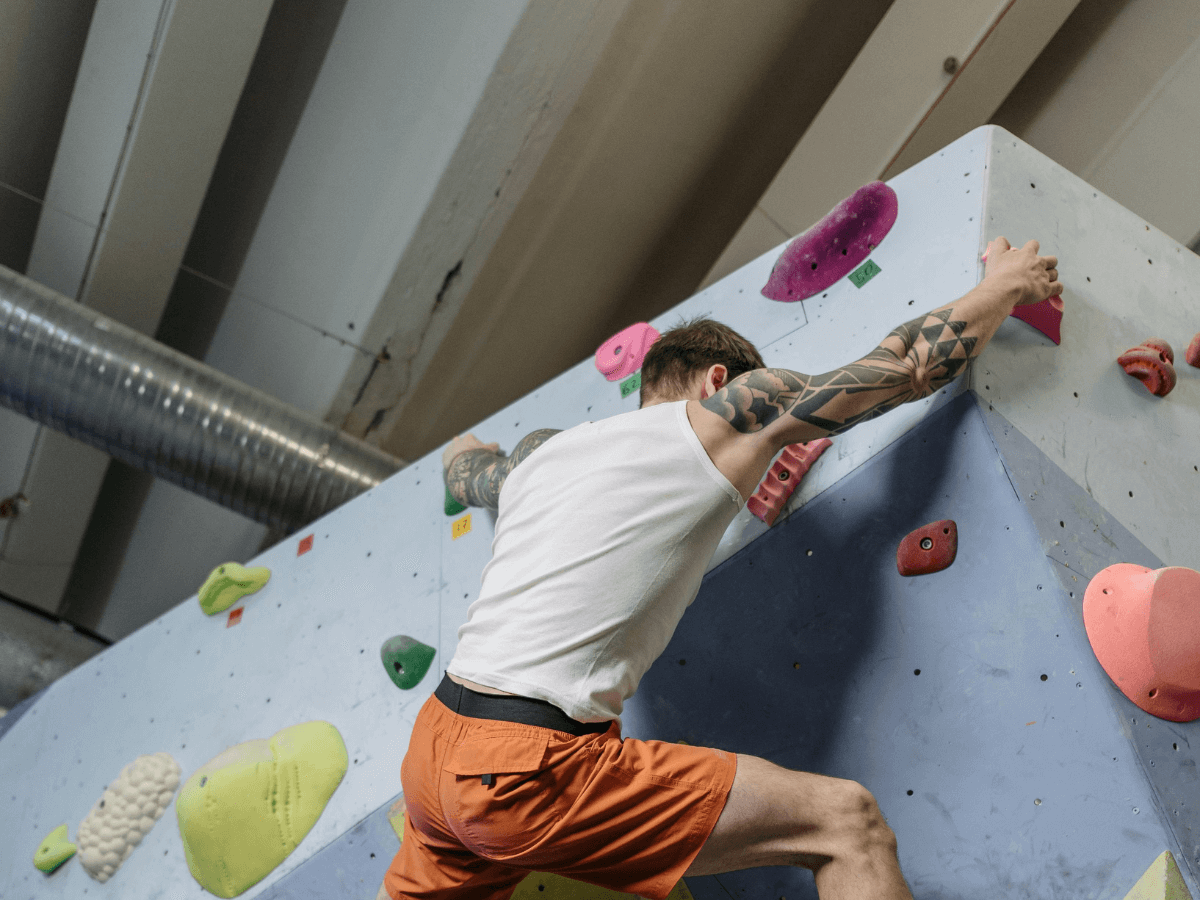Footwork 101: A Beginner's Guide to Climbing Fundamentals
Climbing fundamentals begin with learning proper footwork. Many people believe that upper body strength is all they need to climb a wall, but people actually climb because of their legs. One common mistake is relying too much on upper body strength, leading to inefficient climbing. To correct this, focus on using your legs more and your arms less.
Good footwork matters more than you think! It allows you to take some weight off your arms and gives you more energy to keep pulling and climbing longer. It also lets you put your body in different positions to counter your weight and stay aligned with the climb. But footwork is not just about physical movements, it's also about mental focus and concentration. To improve your footwork, practice mindfulness during your climbs, and visualize your movements before executing them.
Check out the beginner's guide to climbing fundamentals below to improve your footwork and level up your climbing!
Footwork 101
These drills cover a specific area of your footwork and will help you improve your climbing. Remember, to improve efficiently, you must identify what you need to work on and stay consistent!
For each of these drills, choose a climb well below your limit. The idea is to focus on performing the exercises correctly. Climbing something at your maximum grade will prevent you from focusing on your technique.
1. Quiet Feet Drill
This exercise aims to climb as quietly as possible. Once you reach the top, downclimb while still keeping your feet quiet.
This drill will help with your precision and control. After working on this exercise, you'll notice that you won't need to focus as hard to perform solid foot placements.
2. Flagging Exercises
Flagging is an excellent way to counterbalance yourself when you only have one available foothold. To flag, stick your opposite leg out and press it into the wall hard to keep your body stable.
While climbing, perform a flag with each step, up and down. This exercise will help you build confidence when you only have one foothold.
3. Smear Practice
Smearing is placing your foot on the wall where there is no foothold. Instead, you use the wall or bad footholds, as in a hold that appears upside down.
Perform this drill on a slab wall with large holds. Practice pushing your foot into the wall and pulling yourself up with the holds. The pressure between pulling your arms and pressing your feet will allow you to smear up the wall.
Keep working your hands and feet up until you reach the top. Climb down and perform the exercise again until you feel comfortable smearing.
4. Toe Hook Training
Toe hooking is self-explanatory, but there are nuances to performing it well. Hooking your toe around a hold can help you stay on the wall. This move keeps your balance and can be highly beneficial when performing delicate moves on slabs. It can also help you stay close on overhangs.
The easiest holds to perform toe hooks on are underlings or side pulls, where you can generate force in your leg.
Try performing a toe hook as you climb and hold that position. Take note of the muscles you use to keep them engaged. Hold the toe hook to see how stable it can be until you get comfortable with it.
A toe hook requires shin and quad muscles to perform well, so warm up those legs before you climb! Warming up is crucial in any physical activity as it prepares your muscles and joints for the movements you're about to do, reducing the risk of injury.
5. Heel Hook Drills
Heel hooks are opposite to toe hooks in that they use a different part of your foot but are similar in that they help maintain balance. Heel hooks can even help you climb something where the holds are high and out of reach.
Heel hooks are used on all types of terrain. They're great for maintaining balance on overhung routes and helping you mantle on slab and vertical walls.
Pick a slightly overhung boulder problem and practice your heel hooks. Engage your hip muscles to feel just how useful they are—practice removing one hand with a heel hook engaged.
Try to perform as many heel hooks as you can up the wall- whether they're pointless or not, to help you familiarize yourself with the movement.
Footwork 101: Incorporating Footwork Drills
The only way to improve at anything is to practice. One session may be enough to perfect one of these drills. However, revisit it periodically until your footwork technique becomes second nature. To assess your progress, keep a record of the number of times you slip or lose balance during each drill. As you improve, you should see a decrease in these instances.
A good tip is to integrate these drills into your warm-up sessions, so they're fresh before you start serious climbing. Besides, they're a great way to warm up your body!
You can also dedicate time to footwork training sessions. If you take this route, let it be on a rest day when you don't need much energy. Since you'll be climbing on grades well below your max during these drills, you should be fine to practice these on a day after hard climbing. To incorporate these drills into your training plan, start with the quiet feet drill, then move on to flagging exercises and smear practice, and finish with toe hook and heel hook drills. Repeat this sequence twice a week for optimal results.

